African banded mongooses, scientifically known as Mungos Mungo are tiny, cat-like carnivores. They are well-known for their snake-killing abilities and are one of the most gregarious mongoose species, living in gangs of up to 20.
The banded mongoose has a coarse brownish-gray coat, dark paws, a black-tipped tail, and dark bands across its back. These bands, which are present between the mid-back and the base of the tail, characterize this mongoose species. They have five fingers on their front foot and large, curled claws for clawing and digging. Their hind feet feature four fingers and claws, although they are shorter, heavier, and not as curled as their front claws.
Banded Mongoose: Species Profile
COMMON NAME: Banded Mongoose
SWAHILI NAME: Nguchiro Miraba
SCIENTIFIC NAME: Mungos mungo
TYPE: Mammal
FOOD: Banded mongooses are omnivorous, feeding on a variety of food items. Their diet includes insects, small vertebrates, eggs, fruits, and seeds.
HABITAT: Banded mongooses are found in a wide range of habitats, including grasslands, woodlands, and savannas. They are native to sub-Saharan Africa.
SIZE: Banded mongooses have a body length of about 30 to 45 centimeters (12 to 18 inches), with a tail length of approximately 15 to 25 centimeters (6 to 10 inches). They weigh between 1.5 to 2.5 kilograms (3.3 to 5.5 pounds).
AVERAGE LIFE SPAN IN THE NATURAL HABITAT: In the wild, banded mongooses have an average lifespan of around 6 to 10 years. However, some individuals may live longer under favorable conditions.
ACTIVE: Banded mongooses are diurnal creatures, meaning they are active during the day. They live in social groups called “bands” and exhibit cooperative behaviors in various activities, including foraging, grooming, and defending their territory.
GESTATION PERIOD: The gestation period for banded mongooses is approximately 60 to 70 days. Females give birth to litters of 2 to 6 pups, which are born in underground burrows or other sheltered areas.
WEIGHT: Banded mongooses weigh between 1.5 to 2.5 kilograms (3.3 to 5.5 pounds), making them relatively small mammals. They have a slender body, short legs, and a pointed snout.
SIZE COMPARISON TO A 6-FT MAN: Banded mongooses are much smaller than a 6-ft man, with a body length of about 30 to 45 centimeters (12 to 18 inches). They have a sleek and agile body, allowing them to move swiftly and navigate their habitat effectively.
Physical Features:
The Banded Mongoose (Mungos mungo) is a small carnivorous mammal that belongs to the mongoose family. It has several distinctive features that make it easily recognizable:
- Size and Body Structure: Banded Mongooses are relatively small, measuring around 30 to 45 centimeters in length, excluding the tail. They have a slender, elongated body with short legs. Adults typically weigh between 1.5 to 2.5 kilograms.
- Fur Coloration: The fur of Banded Mongooses is short, dense, and coarse. It is typically brown or gray in color, with dark bands or stripes across the back and sides. The number and intensity of the bands may vary among individuals.
- Facial Features: They have a pointed snout with a black or dark-colored nose. Their eyes are small and dark, and their ears are rounded and positioned on the sides of their head. Banded Mongooses also have sharp, non-retractable claws on their paws.
- Tail: The tail of the Banded Mongoose is relatively long and bushy. It is often carried in a slightly curved or upright position, adding to their overall agility and balance.
- Scent Glands: Like other mongoose species, Banded Mongooses have scent glands located near the base of their tail. These glands produce a musky odor used for communication and territorial marking.
It’s important to note that Banded Mongooses exhibit sexual dimorphism, with males generally being larger than females. Additionally, their appearance may vary slightly among different subspecies and geographical regions.
Overall, the Banded Mongoose’s distinctive coloration and body structure make it easily identifiable in its natural habitat.
A. Striking Coat Pattern:
Banded Mongooses are named for their distinct coat pattern, characterized by dark bands or stripes that run horizontally across their bodies. These bands, alternating with lighter fur, provide excellent camouflage and help them blend into their natural surroundings.
B. Compact and Agile Build:
With a body length of around 30 to 45 centimeters and a bushy tail of similar length, banded mongooses have a compact and agile build. Their short legs and sharp claws enable them to move swiftly through their habitat, whether it be grasslands, woodlands, or even cultivated areas.
Social Structure & Behaviour:
Banded Mongooses (Mungos mungo) are highly social and cooperative animals, known for their fascinating behaviors and intricate social structure. Here are some key aspects of their behavior:
- Group Living: Banded Mongooses live in groups called “bands” or “troops,” which typically consist of 10 to 40 individuals. These groups are organized in a hierarchical manner, with a dominant breeding pair and their offspring. Other members of the troop include non-breeding adults and subadults.
- Cooperative Care: One of the most notable behaviors of Banded Mongooses is cooperative care of the young. All members of the group, including both males and females, participate in rearing and protecting the offspring. They take turns guarding the den and babysitting the young, ensuring their safety and providing them with warmth and nourishment.
- Foraging and Hunting: Banded Mongooses are primarily diurnal, meaning they are active during the day. They are omnivorous, feeding on a variety of food items including insects, small mammals, reptiles, birds, eggs, fruits, and seeds. They employ a cooperative hunting strategy, with individuals working together to flush out prey from hiding places and capture it.
- Communication: Banded Mongooses have a complex vocal repertoire consisting of various calls and vocalizations. These vocalizations serve different purposes, such as warning the group of potential threats, coordinating activities, and maintaining social bonds. They also communicate through scent marking using their anal glands.
- Territoriality: Banded Mongooses defend their territories against other groups. They mark their territories with scent, engage in ritualized displays to deter intruders, and engage in occasional territorial fights with rival groups.
- Mobility: Banded Mongooses are agile and excellent climbers. They are capable of moving quickly on the ground and are skilled at navigating through their complex habitat, which often includes grasslands, woodlands, and savannas.
- Interspecies Interactions: Banded Mongooses may interact with other animal species in their habitat. They are known to form symbiotic relationships with certain bird species, where they benefit from the bird’s foraging activities while providing protection by alerting the birds to potential threats.
Banded Mongooses exhibit a range of fascinating behaviors that contribute to their survival and success as a highly cooperative and social species.
A. Cooperative Lifestyle:
Banded Mongooses are renowned for their highly social nature and cooperative living arrangements. They live in cohesive family groups called “troops” or “clans” that typically consist of 10 to 40 individuals. These troops work together to defend territories, care for offspring, and forage for food.
B. Cooperative Breeding:
Only one dominant pair within a banded mongoose troop is allowed to breed, while other members assist in raising the offspring. This cooperative breeding system ensures the survival and well-being of the young ones and strengthens the social bonds within the troop.
Hunting and Foraging:
A. Opportunistic Predators:
Banded Mongooses are opportunistic predators that feed on a wide range of prey, including insects, small reptiles, rodents, birds, eggs, and even fruits. Their keen sense of smell and coordination allows them to efficiently locate and capture their prey.
B. Cooperative Hunting:
When hunting larger prey or facing potential threats, banded mongooses employ a cooperative hunting strategy. They form a coordinated line, with each mongoose taking turns to flush out prey or distract predators, increasing their chances of success and ensuring the safety of the group.
Habitat and Distribution:
Banded mongooses are found across various regions in sub-Saharan Africa, including grasslands, savannas, open woodlands, and scrublands. They have also adapted to human-altered landscapes, such as agricultural areas and suburban environments, demonstrating their resilience and ability to coexist with humans.
Ecological Significance:
A. Pest Control:
Banded mongooses play a vital role in pest control by preying on insects, rodents, and other small vertebrates. Their presence helps regulate pest populations and contributes to the overall balance of ecosystems.
B. Seed Dispersal:
As banded mongooses consume fruits and berries, they inadvertently aid in seed dispersal. The seeds they pass through their digestive system are deposited in different locations, promoting vegetation diversity and contributing to the germination and growth of various plant species.
Conservation Status and Threats:
While banded mongooses are currently listed as a species of “Least Concern” by the IUCN Red List, they still face certain conservation challenges. Habitat loss due to land-use changes, road collisions, and potential disease transmission from domestic animals are some of the threats that require attention to ensure their long-term survival.
Conservation Efforts:
To protect banded mongooses and their habitats, several conservation measures can be implemented:
A. Protected Areas and Habitat Preservation:
Establishing and maintaining protected areas, national parks, and wildlife corridors are essential for safeguarding banded mongoose populations and their habitat. These areas provide refuge, promote biodiversity, and enable their natural behavior to thrive.
B. Awareness and Education:
Raising public awareness about the ecological importance of banded mongooses and promoting responsible coexistence with wildlife is crucial. Education initiatives, community involvement, and ecotourism can contribute to fostering appreciation and support for their conservation.
Mungos mungo
Mungos mungo (Banded mongooses), with their stunning coat patterns, social cohesion, and cooperative lifestyle, are remarkable inhabitants of the African savanna. By understanding and valuing their unique characteristics, raising awareness about their conservation needs, and actively working towards habitat preservation, we can ensure the continued existence of these fascinating creatures and the ecological harmony they contribute to in their natural habitats.
Banded Mongoose Adaptations
Banded Mongooses (Mungos mungo) have several adaptations that allow them to thrive in their habitat and fulfill their ecological niche. Here are some of their key adaptations:
- Social Behavior: Banded Mongooses have evolved a highly social lifestyle, living in cohesive groups called “bands” or “troops.” This social structure provides them with increased protection against predators, cooperative care of the young, and improved foraging efficiency. Their social cohesion enables them to defend territories and resources more effectively.
- Cooperative Foraging: Banded Mongooses exhibit cooperative foraging behavior, which enhances their success in capturing prey. They work together in coordinated group activities, such as flushing out prey from hiding places, cornering prey, and sharing food resources. This cooperative behavior allows them to overcome challenges and secure their food sources more efficiently.
- Mobility and Agility: Banded Mongooses have adapted to their habitat by developing strong legs and agile bodies. They are capable runners and climbers, allowing them to navigate through various terrains and escape from predators. Their agility enables them to access food sources in different locations and helps them evade potential dangers.
- Dietary Adaptations: Banded Mongooses are opportunistic omnivores, allowing them to adapt to a wide range of food sources. Their diet includes insects, small mammals, reptiles, birds, eggs, fruits, and seeds. This broad dietary range enables them to survive in diverse habitats and utilize available resources efficiently.
- Scent Marking: Banded Mongooses have scent glands located near their anal region, which they use to mark their territories and communicate with other members of the group. Scent marking helps establish and maintain social bonds, define territorial boundaries, and deter potential intruders. It plays a vital role in maintaining the cohesion and organization of the group.
- Alertness and Communication: Banded Mongooses have keen senses and exhibit complex vocalizations to communicate with other members of their group. They use various calls and vocal cues to signal danger, coordinate activities, and maintain social interactions. This heightened alertness and effective communication system enhance their ability to respond to threats and maintain group cohesion.
These adaptations have allowed Banded Mongooses to thrive in their environments, ensuring their survival and success as a social and cooperative species.
Where to See Banded Mongooses in Tanzania
Banded Mongooses (Mungos mungo) can be found in various parts of Tanzania, particularly in savannah and woodland habitats. They are distributed across different regions of the country, including national parks and wildlife reserves. Some of the places where you may have a chance to see Banded Mongooses in Tanzania include:
- Serengeti National Park: Known for its vast grasslands and diverse wildlife, the Serengeti provides an ideal habitat for Banded Mongooses. They can be spotted in the open plains, near woodlands, and along water sources.
- Ngorongoro Conservation Area: This UNESCO World Heritage Site is home to a wide range of wildlife, including Banded Mongooses. They can be observed in the crater floor and the surrounding areas, where they forage for food and interact with other species.
- Tarangire National Park: With its lush vegetation and abundant wildlife, Tarangire National Park offers opportunities to see Banded Mongooses. They are often seen near termite mounds and fallen logs, where they search for insects and small prey.
- Lake Manyara National Park: This park is known for its diverse ecosystems, including grassy plains, acacia woodlands, and the lake itself. Banded Mongooses can be encountered along the park’s trails, foraging for food and socializing with their groups.
- Ruaha National Park: Located in southern Tanzania, Ruaha is the largest national park in the country and provides a suitable habitat for Banded Mongooses. They can be spotted near riverbanks and in the park’s woodland areas.
When exploring these wildlife-rich areas, it is important to have patience and keep a keen eye out for the Banded Mongooses, as they may be more elusive compared to some other larger mammal species. Joining guided game drives or walking safaris with experienced guides can increase your chances of encountering these fascinating creatures in their natural habitat.
Banded Mongoose Safari Tips
If you’re planning a safari to observe Banded Mongooses (Mungos mungo) in Tanzania, here are some helpful tips to enhance your experience:
- Choose the right safari location: Opt for national parks and wildlife reserves known for their Banded Mongoose populations, such as Serengeti National Park, Ngorongoro Conservation Area, Tarangire National Park, Lake Manyara National Park, and Ruaha National Park.
- Join guided game drives: Going on guided game drives with experienced safari guides will greatly increase your chances of spotting Banded Mongooses. They have knowledge of the mongoose’s habitat, behavior, and movement patterns, and can take you to areas where they are commonly seen.
- Time your safari: Banded Mongooses are diurnal creatures, meaning they are most active during daylight hours. Plan your safari for early mornings or late afternoons when they are more likely to be out and about, searching for food or socializing.
- Be patient and observant: Banded Mongooses are relatively small and agile creatures, so it may take some time to spot them in their natural habitat. Keep a keen eye out for their movement, listen for their vocalizations, and scan the surroundings for any signs of their presence, such as digging activity near termite mounds.
- Respect their space: When you do encounter Banded Mongooses, maintain a respectful distance and avoid making sudden movements or loud noises that could startle them. Observe their behavior from a distance without causing any disturbance or interference.
- Use binoculars and cameras: Binoculars and cameras with zoom lenses will allow you to get a closer look at Banded Mongooses without getting too close physically. Capture their fascinating behaviors and interactions while respecting their natural habitat.
- Follow the guidance of your safari guide: Your safari guide is a valuable resource of knowledge and experience. Follow their instructions, ask questions, and rely on their expertise to maximize your chances of encountering Banded Mongooses during your safari.
Remember that wildlife sightings can never be guaranteed, as animals are free-roaming and their behavior can be unpredictable. However, with the right planning, patience, and a bit of luck, you can have an incredible safari experience observing Banded Mongooses and other wildlife in Tanzania.
Frequently Asked Questions about Banded Mongoose
1. What is the size of a Banded Mongoose?
Banded Mongooses are small to medium-sized mammals, with adults typically measuring around 40 to 60 centimeters (16 to 24 inches) in length, excluding the tail. Their tails can add an additional 15 to 30 centimeters (6 to 12 inches) to their overall length. They weigh between 1.5 to 2.5 kilograms (3.3 to 5.5 pounds).
2. What does a Banded Mongoose look like?
Banded Mongooses have a distinct appearance with a slender body, short legs, and a pointed snout. They have coarse fur that varies in color from grayish-brown to reddish-brown, with dark bands across their back and sides, giving them their name. Their tails are bushy and their faces are marked with dark patches around the eyes.
3. What is the habitat of Banded Mongooses?
Banded Mongooses are adaptable animals that inhabit a variety of habitats, including savannas, grasslands, woodlands, and scrublands. They are primarily found in sub-Saharan Africa, including Tanzania, where they can be seen in national parks, game reserves, and other protected areas.
4. Are Banded Mongooses social animals?
Yes, Banded Mongooses are highly social animals that live in family groups known as troops. Troops typically consist of 10 to 40 individuals, although larger groups of over 50 individuals have been observed. Within the troop, there is a hierarchical structure, and cooperative behaviors, such as grooming and babysitting, are common.
5. What do Banded Mongooses eat?
Banded Mongooses are omnivorous, feeding on a wide range of food sources. They have a diverse diet that includes insects, small vertebrates like rodents and birds, eggs, fruits, and even carrion. Their diet can vary depending on the availability of food in their habitat.
6. Do Banded Mongooses have any predators?
Banded Mongooses face predation from various predators, including larger carnivores like lions, hyenas, and leopards. Birds of prey, such as eagles and owls, may also pose a threat to young or vulnerable mongooses. To protect themselves, mongooses rely on their agility, group defense strategies, and warning calls to alert others of potential danger.
7. Are Banded Mongooses endangered?
Banded Mongooses are currently listed as a species of “Least Concern” on the IUCN Red List of Threatened Species. They have a wide distribution across sub-Saharan Africa and are generally adaptable to different habitats. However, localized threats such as habitat loss, fragmentation, and human-wildlife conflict can impact specific populations.
8. Can Banded Mongooses transmit diseases to humans?
Like many wild animals, Banded Mongooses can carry diseases, including rabies and parasites. It is important to maintain a safe distance and avoid direct contact with wild mongooses or any other wildlife to minimize the risk of disease transmission. It is always recommended to follow the guidance of trained safari guides and adhere to wildlife viewing guidelines to ensure your safety and the well-being of the animals.
9. Can Banded Mongooses be kept as pets?
In general, wild mongooses are not suitable as pets. They have complex social structures and specific habitat requirements that are challenging to replicate in a captive setting. Furthermore, keeping wild animals as pets may be illegal and can contribute to wildlife trafficking and the disruption of natural ecosystems.
10. Can Banded Mongooses be seen during a safari in Tanzania?
Yes, Banded Mongooses can be encountered during a safari in Tanzania, particularly in national parkssuch as Serengeti National Park, Ngorongoro Conservation Area, Tarangire National Park, Lake Manyara National Park, and Ruaha National Park. However, as with any wildlife sighting, there is no guarantee of seeing specific animals, as they are free-roaming in their natural habitats. Hiring an experienced safari guide and being patient and observant will increase your chances of spotting Banded Mongooses in Tanzania.

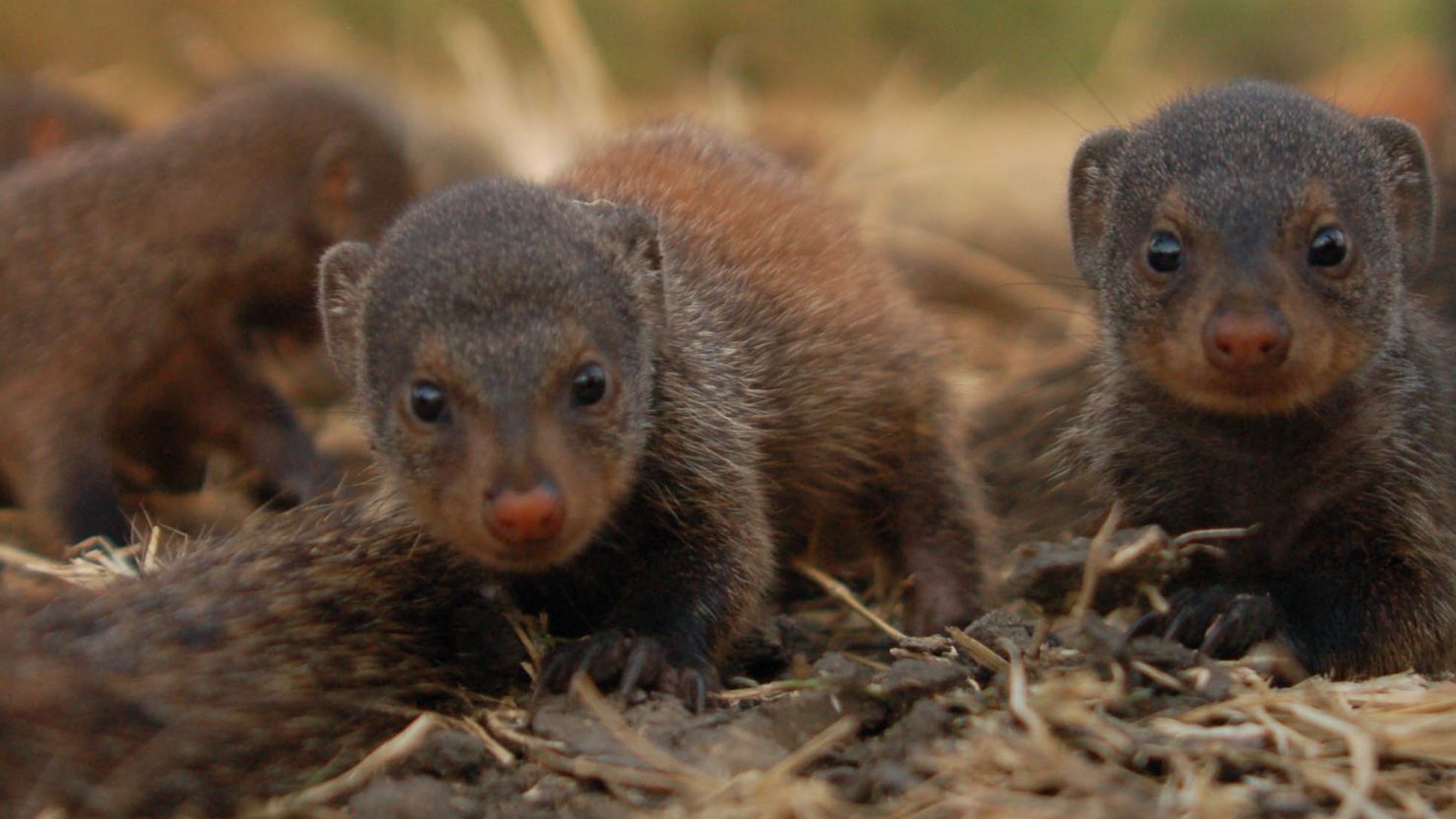

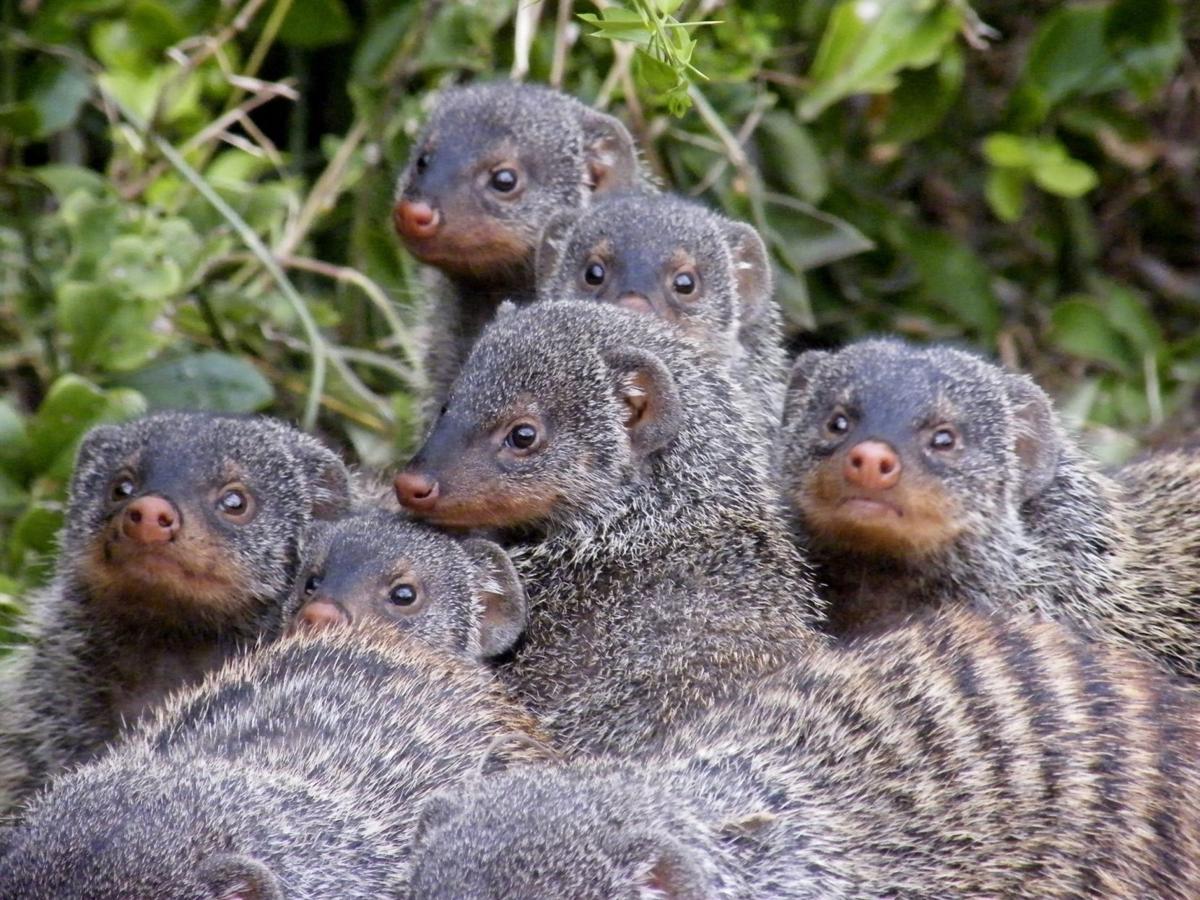
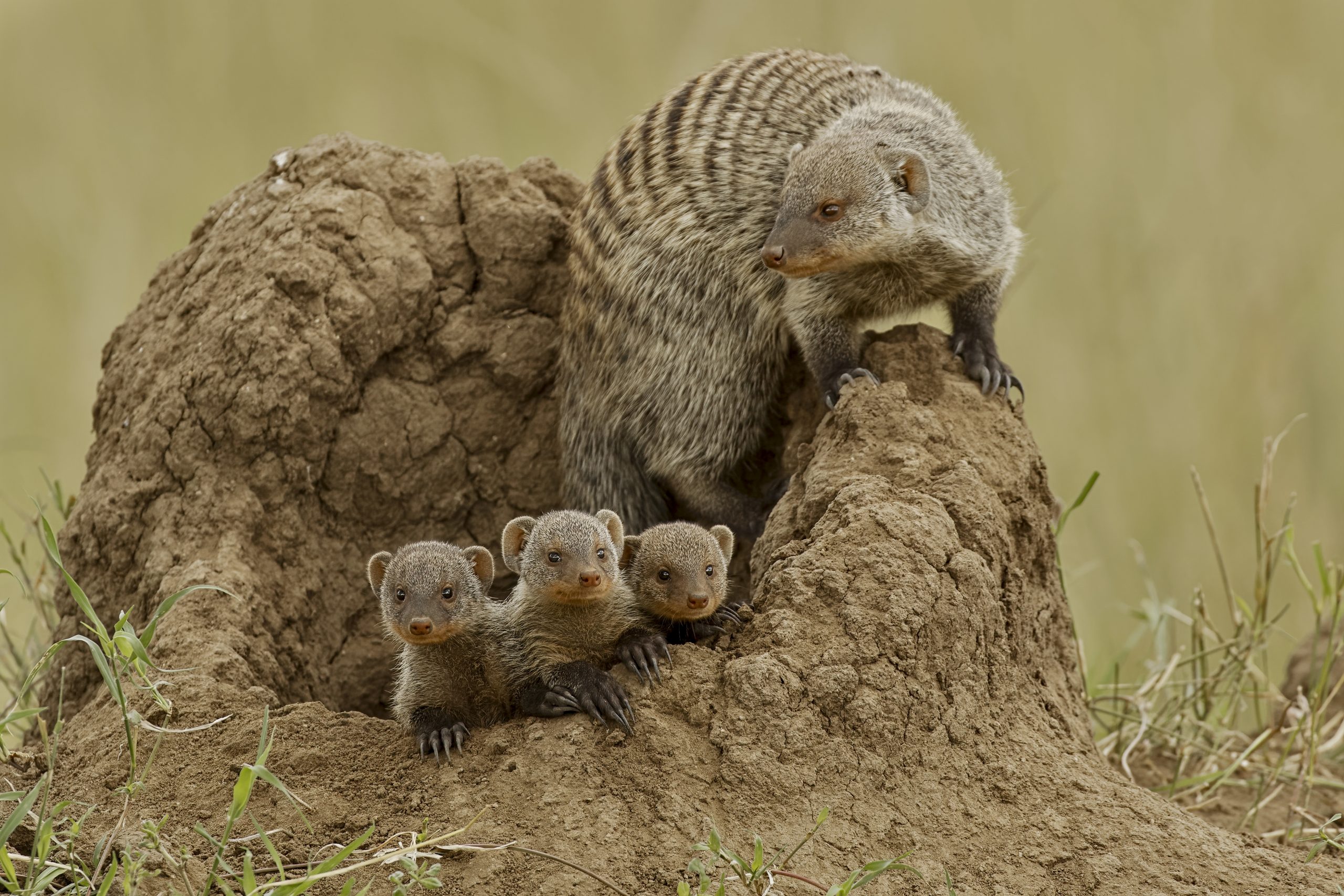
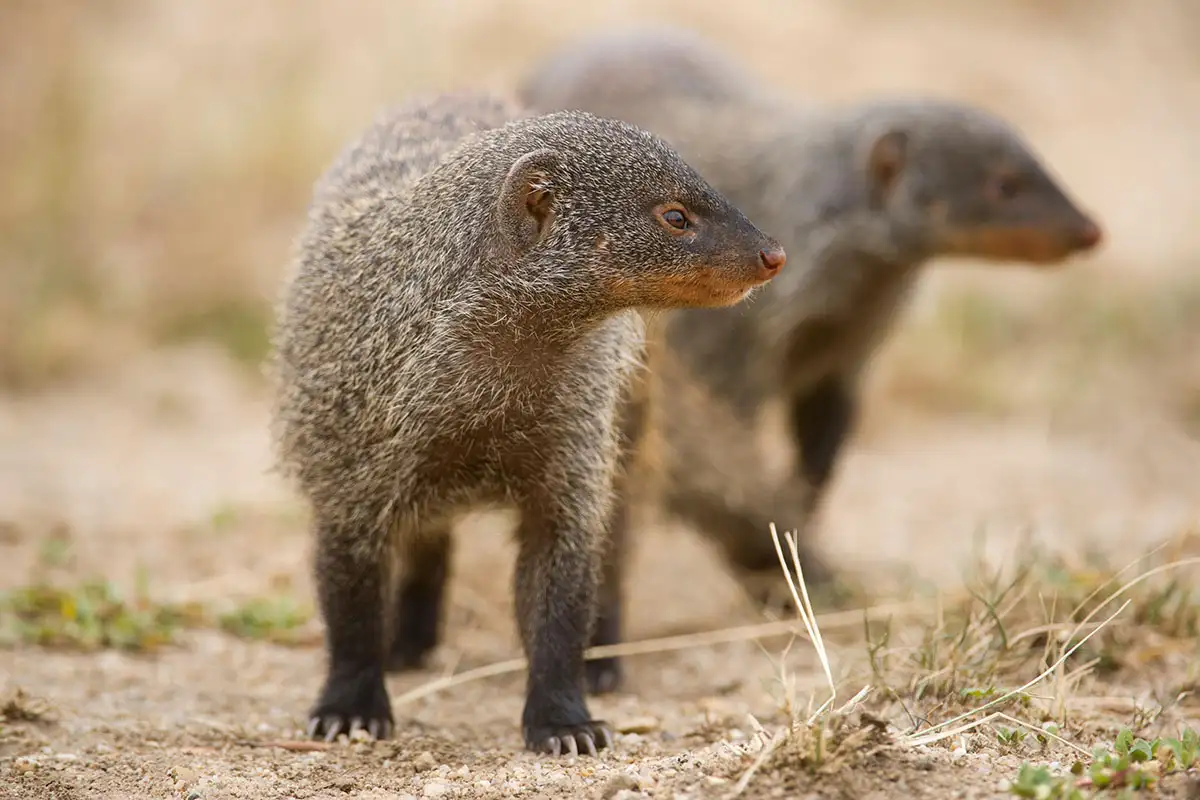
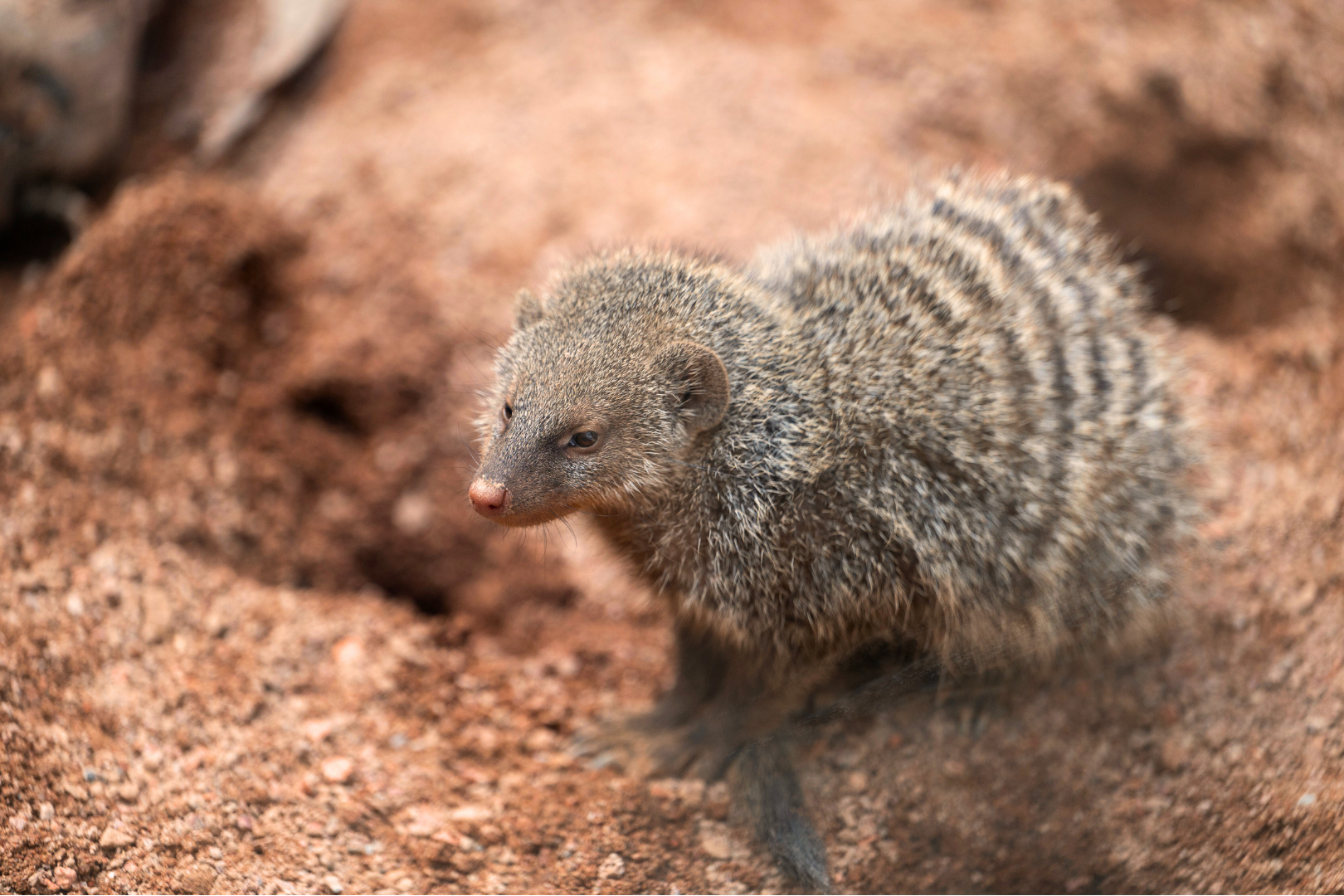
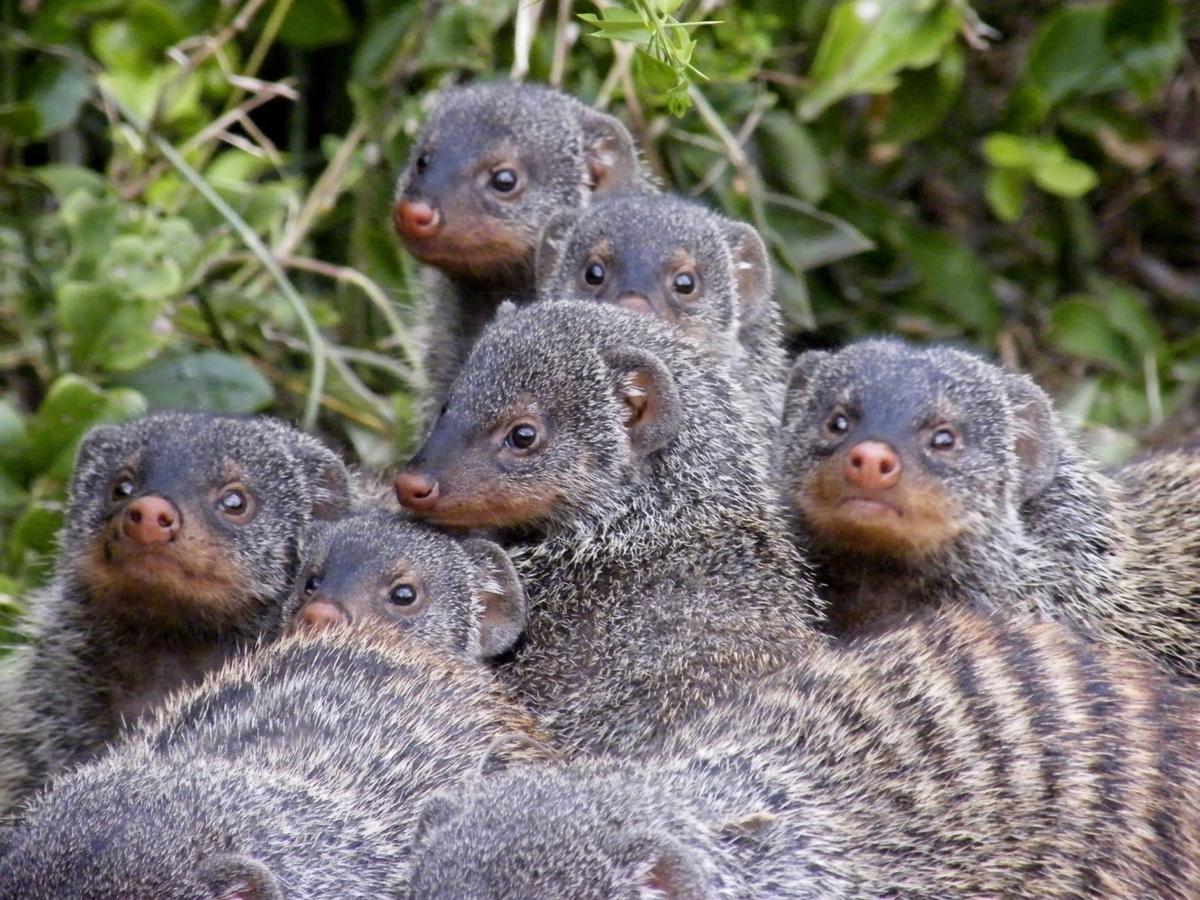
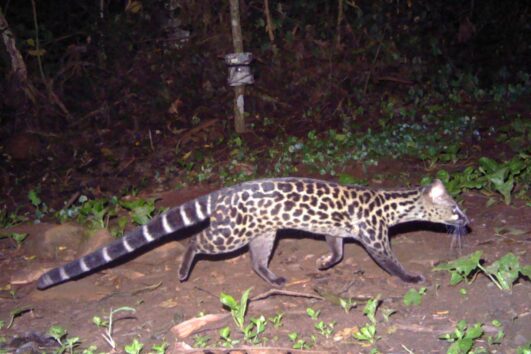
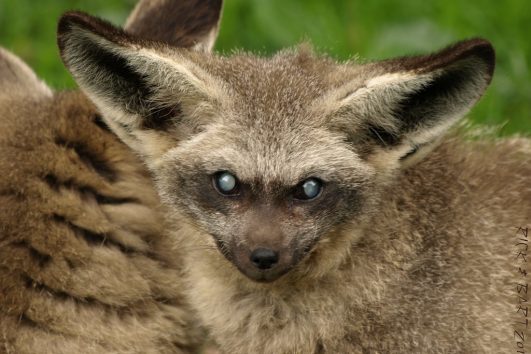

Tour Reviews
There are no reviews yet.
Leave a Review